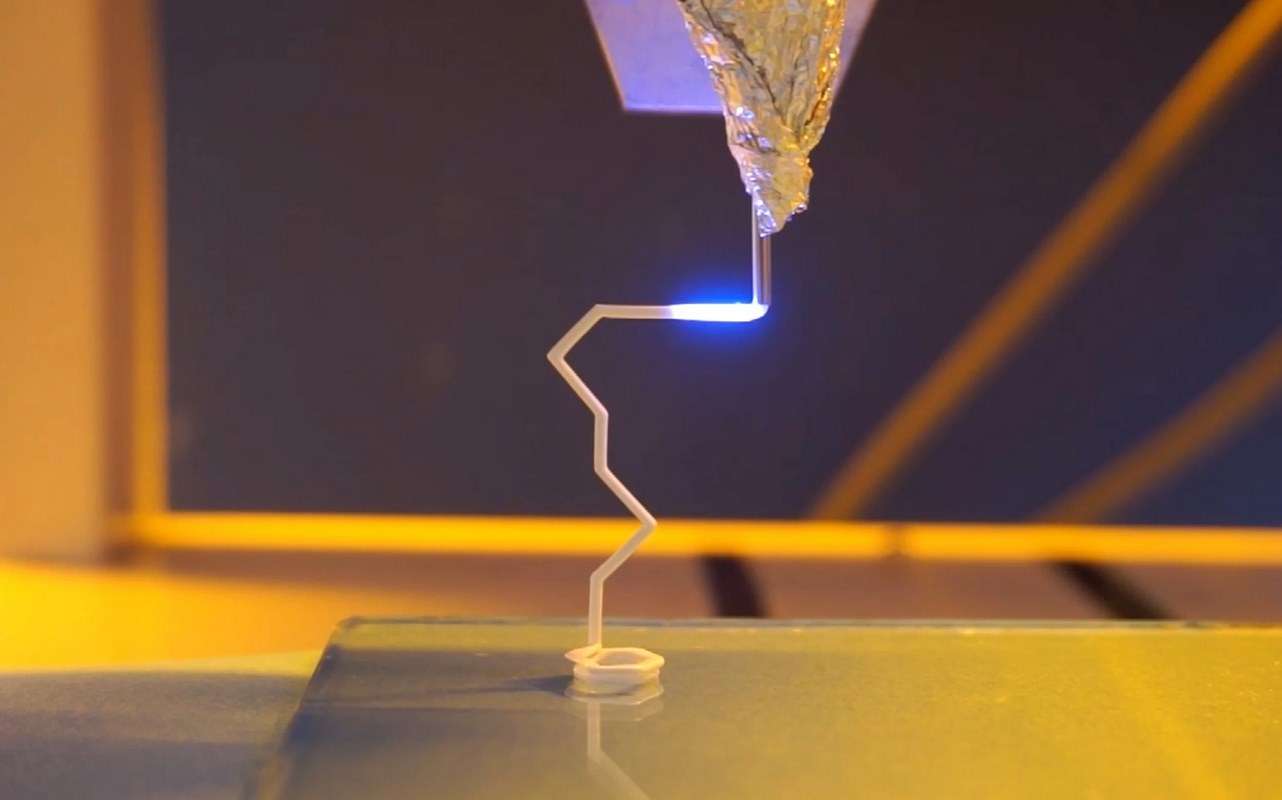See the Moon Under the "Da Vinci Glow" in the Next Three Days
Da Vinci used his artistic insights into the nature of light, and his engineering-level geometry to describe the glow around the moon.

In a warp-speed technological advancement, Chinese scientists have developed mid-air ceramic 3D printing.
The team from Jiangnan University has enabled ceramic curves to be freely extended in space without support, opening a panoply of additional applications for the already-widely-used technology of ceramic.
Ceramics are used at high levels of engineering technology in aerospace, computer, and mechanical engineering because of their structural stability, wear resistance, and high-temperature endurance.
The team uses a photo-sensitive ceramic slurry for the 3D printing mixture that almost instantly solidifies when it comes in contact with near-infrared light from the sun or heat lamps, as seen in the image above.
"The printed curves can be freely extended in space without support. The printing process is smooth and continuous, without the need for heating or cooling," Professor Liu Ren said in the paper.
With the new slurry, Liu Ren was able to print ceramic torsion springs at 3.5 millimeters thickness which retained their shape in mid-air.
Using near-infrared light can solidify certain ceramic structures at these thin dimensions, even at right angles, instantly upon exiting the printing nozzle, removing the need for support structures that can impede printing efficiency.
They also remove the sometimes irritating and existing problems when supporting stands and arms need to be removed after the material has solidified, a not-always-easy process that can risk breaking sensitive printed structures.
The team also demonstrated the ability to create various additive-ceramic printing mixtures that would otherwise cause warping, cracking, and other defects in the finished ceramic product.
If the technology is refined, Professor Liu wrote in his paper, then the aesthetics of the created material could also be taken into account, and he hopes that future advances would help inspire the science of 3D printing further.
SHARE This Major Advancement On Social Media…
Be the first to comment